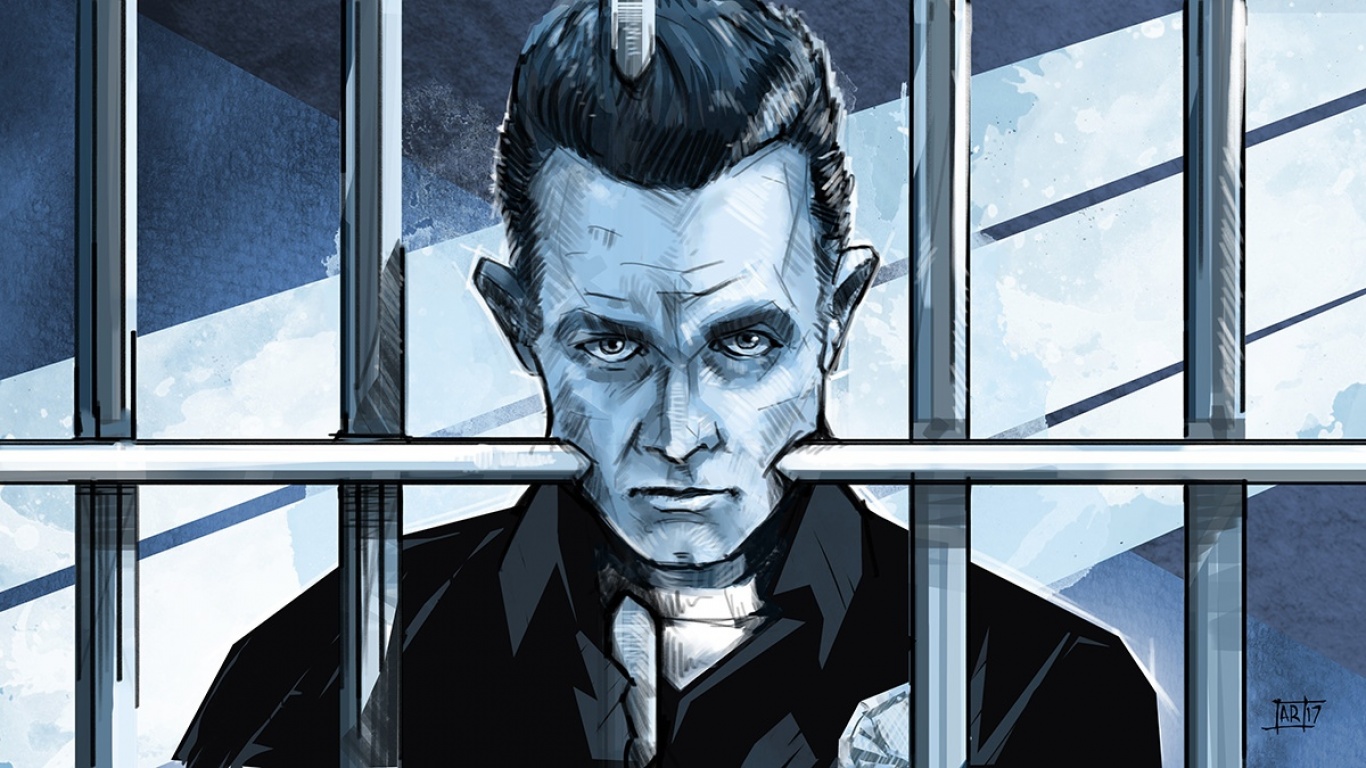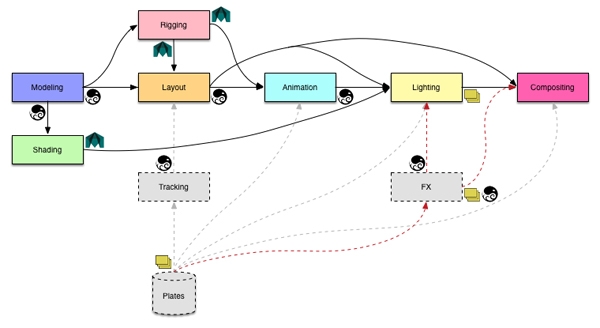
VFX jobs in the broadcast industry
A Very Brief History....
There are a number of VFX hubs across the globe. With many of the largest VFX companies based across Soho’s square mile. There are solid storytelling roots in the capital, since Kubrick made 2001 at Shepperton and Lucas made Star Wars in studios around Kendal Rise, Elstree and Shepperton. They pushed models and camera work to it’s limits and helped paved the way for the next generation of design.
Certain movies like Lost In Space heralded an important time for VFX in the UK, where companies that were typically working on ads and promos started to work together on film projects. This way of working was further enhanced by over a decade of Harry Potter films, building a larger community of artists to work on hundreds of shots, films, episodic and commercial content.
Soho was a perfect location for a creative community to come together and thrive.
As rents have increased, many vfx companies around Wardour Street have dispersed to cheaper locations in the capital. As the demand for content has exploded, more visual effects and artists are required. Resulting in secondary offices in Canada, India, Nepal and India thriving.
Significant tax breaks from continued Government support is an important factor which frequently helps determine where VFX shots are completed.

The Future.....
The acceleration of remote working from the global pandemic have enabled studios to tap into a global workforce.
The availability of cloud based tools has created a lower barrier to entry for studios to setup. The is no longer a need for large physical rack rooms of render farms, with their own heating and cooling needs and Sys Admin support.
A studio can setup its entire technical infrastructure using AWS and tools like hp’s teradici to give teams of artists access to a workstation anywhere in the world.
Studios can rapidly scale up their creative teams without the technical debt and capex investment once needed.
Studios that can tap into a network of proven talent across the globe are rapidly growing.
Overview
It’s worth outlining an important distinction between:
VFX is the combination of computer effects and live action footage to create realistic imagery.
CGI is computer generated imagery.
CFX is creature effects.
You will also hear people mention the ‘VFX Pipeline’
A VFX pipeline is all the processes and people that work together to create a scene that contains all visual elements.
So what are all the stages of a VFX operation or pipeline?

Storyboarding and Animatics
During the storyboarding and animatics phase an artist or team of artists create visual representations of the actions within the script. They analyse the character motion and settings within the story and use basic drawings to define framing from shot to shot. The results are subject to change down the line, but these visuals give the production team a chance to start preparing.

Pre-Vis
Pre-vis takes storyboarding a step further. 3D artists create low poly models and representations of the locations where scenes play out. They work with the production team to set up camera angles and block out complex scenes ahead of time, saving time and money on set.

Concept Art and Design
Concept art and design are arguably one of the most important phases of pre-production. A concept artist or team of artists create the look and feel of a film by drawing fully fleshed out images that further define settings, characters, props, costumes, lighting, colour and more. The mood and style of a film is often defined by what is created during the concept art phase.
Matchmove and Camera Tracking
A 3D camera is generated so that the VFX team generates the 3D characters and objects that need to be integrated into the footage. The process of matching the motion of a character or object with the footage called rotomation.
(Software Used - PF Track, 3D equaliser)

Layout and Production Design
Layout, also referred to as production design, has a different meaning for different teams. The end goal is to have a visual representation of what the final sets will look like. This helps physical set builders figure out and communicate to directors and producers what is physically possible and what may need a digital set build. For the VFX team, it defines how digital set builds might have to be incorporated. The layout team and production designers may use drawings, photos, and 3D renderings to finalize the sets.
Modelling and Asset Creation
The 3D modeling and texturing teams are essential to creating things that aren’t practical or cost-effective to have on set. Being one of the first groups involved in the post-production process, they may have to model assets such as props, buildings, vehicles, and weapons. 3D models may also be used to complement something shot on set. Some of these can just be simple and used to correct lighting and shadows. Other assets may need to be fully realized and textured, especially if they are going to be destroyed or modified.
(Software Used - Maya, ZBrush, 3d Studio Max)

Research and Development (R&D)
As filmmaking gets more complex, R&D is becoming increasingly more important. During this stage VFX supervisors work with directors to figure out how certain shots can be accomplished. In the meantime the VFX artists, technical directors, modellers, animators, and compositors do their own research. For example, if a film needs explosions that come from a specific source, like a missile, the VFX artists and technical directors study videos and photos to see how the fire and smoke behave. They then create tools within a program to efficiently work on the final shots.

Rigging
Before an object or character can be animated, a rigging team must build a system of controls, or a digital skeleton, for animators to use. This usually involves adding bones, calculating and implementing skin weights, and adding muscles to replicate the natural movement of a character.

Animation
Animators then add a texture as an outer layer and use the custom controls of the rig to bring the character, prop, or vehicle to life. Its movement is mathematically mapped out and sequenced by software that outputs the final animation. They also work with motion capture data that needs to be tweaked to achieve a final look.
(Software Used - Maya, Houdini, Red Shift)

FX and Simulation
The job of an FX artist revolves around adding simulated elements to a film that seamlessly exist in the director’s world. This includes simulations as well as the more abstract tasks that don’t really fit in anywhere else in the pipeline. At any given time, an FX artist could be working on things like destruction, fire, liquids, smoke, and particle simulations. They also could be adding hair to a character or creating footsteps in the snow. They will often work alongside the animators and modelers to ensure the natural movement and interaction with colliding FX elements.
(Software Used - Houdini, Maya)

Lighting and Rendering
Once the animation and effects teams are done working their magic, the 3D elements need to be lit to blend into the scenes. A lighting artist, or team of lighting artists, strategically places lights throughout the 3D scene to ensure light color, intensity, and shadows match up with the originally shot piece. Each sequence of frames is then rendered out from the needed camera angles and handed off to the compositor.
(Software Used - Katana is a lighting tool, Arnold and V ray are rendering software)
Compositing
This is the final step of the visual effects pipeline. A compositor takes all the elements of the film and layers them on top of each other. They use elements like color correction, masking and other tricks to create the illusion that all elements naturally belong together. They may be putting an animated character into a live-action scene, overlaying destruction onto a building, or even layering a simulated tsunami over a shot of a city street. The possibilities of what a compositor may be working on are endless, and they are often using the complex tools within The Foundry’s Nuke to complete their work.
The advent of Virtual Production is shaking up the traditional VFX pipeline by moving tasks such as rendering, lighting, matchmove, camera tracking, etc upfront into the production process. Using a sound stage made up of LED screens that deliver effects in final pixels and gaming software that allows for real time landscape navigation, VFX artist are working their magic on set. It is an exciting time to enter the industry and a great opportunity to be a pioneer of new filmmaking methods. Regardless of how things change, a solid knowledge of all the VFX steps is still required.
(Software Used - Nuke, Flame, Smoke)

Useful Explainer Videos
A good overview of the VFX pipeline